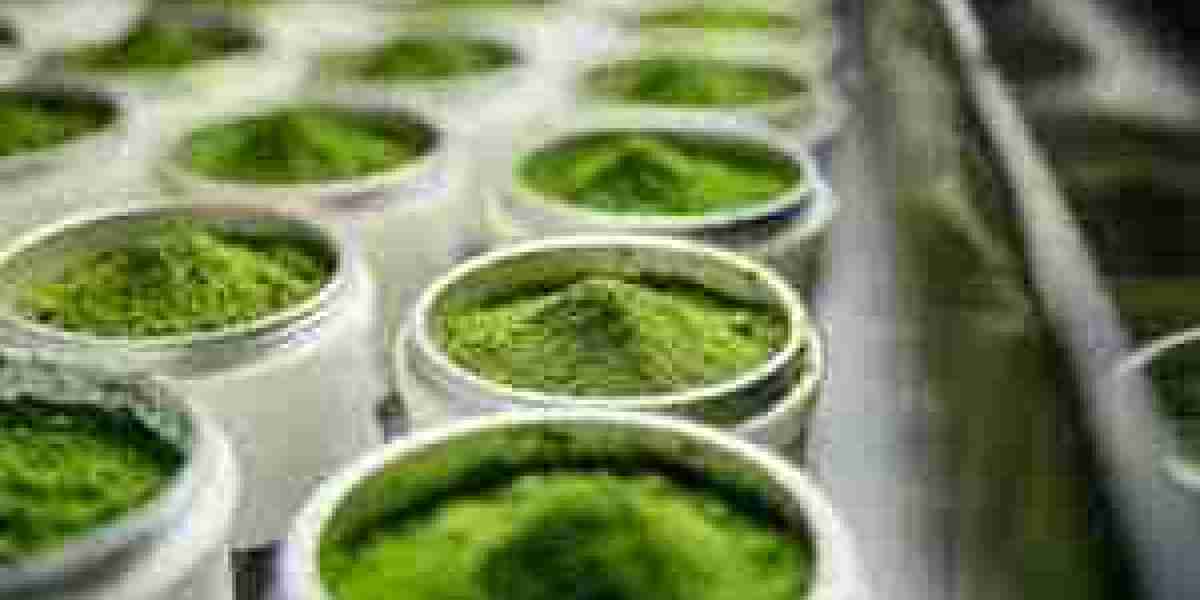The global matcha market is witnessing a significant transformation as sustainability becomes a central pillar in its value chain. From farm-level practices in Japan to eco-conscious packaging initiatives across Western markets, brands and producers are rethinking every aspect of matcha production. Environmental responsibility is no longer a niche concern but a mainstream requirement, as consumers demand transparency, ethical sourcing, and minimal ecological footprints in their wellness products.
Responsible Sourcing Gains Ground Among Matcha Producers
Sourcing matcha sustainably starts at the farm. Traditionally cultivated in Japan, matcha farming requires specific shading techniques and hand-harvesting methods. While these practices naturally support biodiversity and soil health, there is a growing emphasis on improving traceability and reducing the use of synthetic inputs in cultivation.
Organic matcha is in high demand, especially in North America and Europe, where consumers are willing to pay a premium for pesticide-free, non-GMO products. As a result, many matcha producers are working closely with tea farmers to secure organic certifications and adopt sustainable agriculture practices, including natural fertilizers, rotational planting, and minimal water use.
Cooperatives and direct-trade relationships between brands and smallholder farmers are also helping improve traceability. These partnerships ensure that farmers receive fair compensation while allowing brands to communicate authenticity and ethical sourcing to their end consumers. Certifications such as USDA Organic, JAS, and Fair Trade are becoming common, offering third-party verification that enhances brand trust.
Carbon-Conscious Manufacturing and Transportation Practices
Once harvested, the journey of matcha from farm to cup involves several energy-intensive steps—steaming, drying, grinding, packaging, and international shipping. Recognizing this, many players in the matcha market are adopting lower-emission strategies to minimize environmental impact.
Some manufacturers have invested in renewable energy sources to power tea processing facilities. Solar energy and biomass fuels are being used to reduce reliance on fossil fuels. Others are optimizing their supply chains to decrease transit emissions, often by sourcing matcha closer to the point of sale or working with logistics partners that use carbon offset programs.
Air freight, once common for premium matcha exports, is being replaced with slower but more sustainable shipping methods, like ocean freight or rail, wherever feasible. These changes may slightly increase delivery times but are aligned with environmentally conscious values that resonate with target audiences.
Innovation in Packaging: Moving Beyond Single-Use Plastics
Packaging is a major focal point in matcha sustainability efforts. As consumers become increasingly critical of plastic waste, brands are shifting toward compostable, recyclable, or reusable packaging materials. This is particularly relevant for matcha powder, which often comes in tins, pouches, or sachets that must preserve freshness while reducing environmental harm.
Aluminum tins with paper seals, plant-based pouches, and glass jars with bamboo lids are now replacing traditional plastic containers. These new formats not only enhance shelf appeal but also support zero-waste lifestyles. Some brands have gone further, offering refillable matcha options through online subscriptions or in-store dispensers, reducing packaging altogether.
Additionally, minimalistic labeling and soy-based inks are being employed to further reduce ecological damage. Sustainability messaging on the packaging reinforces a brand’s values, often communicating carbon savings, recycling instructions, or the provenance of the matcha inside.
Consumer Behavior Fuels Green Demand
The shift toward sustainable sourcing and packaging is not just industry-led—it is consumer-driven. Millennials and Gen Z consumers, in particular, are leading this change, as they prioritize purchases that align with their environmental and ethical standards. These demographics research product origins, evaluate certifications, and expect brands to be transparent about their ecological impact.
In a recent survey across wellness product categories, over 70% of respondents indicated they would switch brands if another offered more sustainable packaging. This loyalty shift is especially potent in the functional beverage segment, where brand identity often hinges on values like wellness, mindfulness, and sustainability.
Social media also plays a key role in elevating green brands. Unboxing videos, influencer reviews, and behind-the-scenes sourcing content help educate consumers and build emotional connections. Brands that highlight their sustainable matcha journey through storytelling have a competitive edge in today’s crowded marketplace.
Case Studies: Brands Pioneering Green Practices
Several companies stand out in their efforts to lead the matcha sustainability movement. A number of premium U.S. and European brands have built their identity entirely around ethical matcha, sourcing directly from organic farms in Uji and Nishio, Japan. They often publish annual sustainability reports, outlining water usage, carbon savings, and farmer partnerships.
One notable brand has achieved zero-waste packaging by offering matcha in compostable refill pouches and collecting empty tins from customers for reuse. Another has introduced blockchain traceability, allowing buyers to scan a QR code and view the exact origin, harvest date, and farm conditions of their matcha.
Even larger wellness beverage companies are stepping up, incorporating sustainably sourced matcha into their broader product lines and using recyclable or biodegradable labels and caps to reduce landfill waste.
Long-Term Outlook for Sustainable Growth
Sustainability is expected to shape the next decade of growth in the matcha market. As global awareness of climate change and resource scarcity intensifies, regulatory frameworks may begin to enforce environmental standards in tea production and exportation. This could include carbon caps on supply chains, stricter organic certifications, and waste management protocols for packaging.
For brands, aligning with these evolving standards is both a responsibility and an opportunity. Those who innovate now—by investing in green technology, building ethical supply networks, and engaging consumers on sustainability—will secure a loyal customer base and future-proof their operations.
The convergence of wellness and environmentalism is particularly powerful in the matcha category. Few ingredients so effectively symbolize health, tradition, and sustainability, making matcha uniquely positioned to lead in a greener future for global functional beverages.



